Iliopsoas stretching exercise: Health benefits, types & how to do?
Iliopsoas stretching is a great exercise to improve flexibility to improve posture and stability of the trunk. This exercise have many health benefits and fitness level.
What is iliopsoas stretching?
The iliopsoas muscle is in charge of flexing and laterally rotating the thigh at the hip joint. It also assists in flexion and stabilization of the trunk and helps with good posture. The iliopsoas includes the iliacus, psoas major, and psoas minor muscles, which combine together and form the iliopsoas muscle.
This muscle group attaches the spine to the femur. The psoas starts from the lower six vertebrae of your spine. The iliacus begins from the inside bowl of your pelvis. They meet and inlay on the top of the femur, or upper leg bone. The iliopsoas works to maintain the trunk during activities such as lifting, pulling, and pushing. The iliopsoas also moves the knees toward the chest. Such as swinging your leg forward when running and when doing kicking motions in sports such as soccer.
Performing this iliopsoas stretch gives you so many boons in your daily life performance.
What are the Health Benefits of stretching the Iliopsoas muscle?
There are so many benefits you can achieve by performing iliopsoas stretch. some are below:
There are so many benefits you can achieve by performing iliopsoas stretch. some are below:
- Tight iliopsoas muscles are the main problem for many people, especially if you spend most of your day seated.
- That is because when we take a sitting position, the iliopsoas muscle shortens and becomes inactive. iliopsoas stretch can lose your tight muscles.
- Daily stretching the iliopsoas muscle may reduce the risk of injuries, stabilize your trunk, and improve posture.
- It can support you move from a sitting position to standing.
- Stretching the iliopsoas muscle may also decrease hip pain and improve hip mobility. And if you have pain in the lower back, performing the proper iliopsoas stretches can help reduce this pain and stop further injury.
- It also helps you to your walking and doing your daily tasks.
- It increases blood supply to the front of your thighs.
- Stretching gives relaxation to your muscles.
- Also, improves the range of motion around the hip joint. such as hip flexion, lateral rotation.
What are the types of iliopsoas stretch?
There are different types of iliopsoas stretch :
- Standing Hip Flexor Stretch
- Kneeling Hip Flexor Stretch
- Glute Bridge
- Hip Flexor Bed Stretch
- Table Psoas Stretch
- Runner’s Lunge
- Hips Elevated stretch
- High Lunge
- Half Frog
- Hero Pose
- Supported Side-Plank Reach
- Seated butterfly stretch
- Knee to chest stretch
- Pigeon Pose
- Standing Stance Pelvic Tilt
- Cobra Stretch
- Wall psoas Stretch
- Sumo Squat Stretch
Standing Hip Flexor Stretch (Iliopsoas stretching)
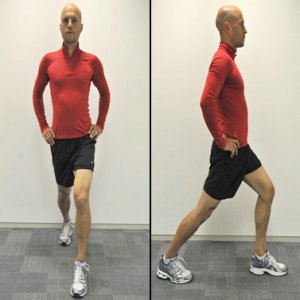
This stretch is beneficial for a person who cannot take a kneeling position.
How to stretch: Stand tall with your feet around hip distance apart.
Step your left foot forward into a split stance.
Engage the core muscle and tuck your pelvis. You can place your hands on the left leg.
Maintain your back leg straight and gently lunge forward with the left leg.
You can feel a stretch in the front of your hip, groin, and thigh of your right side.
Hold this lunge position for 20 to 30 seconds. A person should not feel any low back pain. If you do, release the stretch.
Gently return to the beginning position and change sides.
Do the standing hip flexor stretch 2-3 times on each side.
Kneeling Hip Flexor Stretch
How to stretch: Take a half-kneeling position with the left leg about two feet in front of the right leg.
The left knee should form a 90-degree angle. You need to use a mat for cushioning.
Place your hands on your left knee, keep an upright posture.
Next, incline slightly forward till you feel a stretch in the front of your hip, groin, and thigh of your right side.
Hold this kneeling position for 20 – 30 seconds. A person should not feel any low back pain. If you do, release the stretch.
Slowly return to the beginning position and change sides.
Do the kneeling hip flexor stretch 2-3 times on each side.
Glute Bridge

The bridge helps you to stretch the iliopsoas while also strengthening the glute muscles.
How to stretch: Place an exercise mat on the ground.
Lie in a supine position with your arms at your sides, your both knees bent and feet flat on the ground.
Engage the glutes and raise your hips to create a bridge between your knees and shoulders.
Lift your hips until you feel a stretch in the iliopsoas muscle in both legs.
If you experience lower back pain, down your hips slightly, but maintain your glutes tight.
You cannot always feel a stretch so don’t keep forcing through back pain.
Hold this bridge position for 20 – 30 seconds.
Lower your hips to the floor and repeat.
Do the glute bridge 10 times.
Hip Flexor Bed Stretch
How to stretch: Lie in a supine position on your bed and position yourself with your left leg closest to the edge of the
bed.
Slowly let your left leg hang down to the side of the bed.
Your right leg can stay bent with your foot on the bed.
You can feel a stretch in the hip flexor.
Ideally, your foot will hover over the floor instead of touching. But it’s okay if it does touch the floor.
Deepen the stretch by slowly bending your knee. A person should feel this across the thigh and front of the hip.
Hold this hanging position for 20 – 30 seconds.
Return the left leg to the bed and rotate so your right side is closest to the edge of the bed.
Do the hip flexor bed stretch 2-3 times on each side.
Table Psoas Stretch
How to stretch: Choose a table that is slightly lower than hip level.
Stand with your left side next to the table and lift your left leg behind you and put it onto the table with the knee facing down.
This leg will be aligned. You can put a folded towel under your knee to relieve any pressure from the table.
Place your left hand on the table in front of you. Your right leg should be slightly flex.
Gently move into the stretch by raising the chest up tall and opening up the hip flexor area.
Pause when you feel the stretch in your left hip.
Hold this standing position for 20- 30 seconds.
Let go of the stretch and repeat on the opposite side.
do the table psoas stretch three times on each side.
Runner’s Lunge
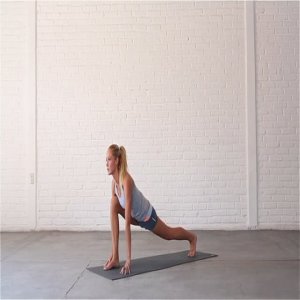
How to stretch: Start kneeling with both knees on the floor.
Then, bring your left foot forward so that your left knee is directly above your left ankle.
Simultaneously extend your right leg behind you so that your right knee is behind your right hip and the top of your foot
is on the floor.
Rest your hands on your left thigh.
For a deeper stretch, drive the top of your back foot into the floor.
Pause for 60-120 seconds, then repeat the motion on the opposite side.
That’s one repetition. Do it 3-4 times.
Hips Elevated stretch
How to stretch: Lie down in a supine position with your extended in front of you and your arms at your sides.
Then, put a foam roller or block under your hips and low back.
So the hips are elevated and your head and shoulders are resting on the floor.
Bend your right knee and wrap your arms around the shin to bring it closer to the chest.
Hang there for 60-120 seconds.
Then repeat the movement on the opposite side.
High Lunge
How to stretch: Stand tall with your feet around shoulder-width apart and your hands at your sides.
Step your right foot a couple of feet behind you and bend your left knee 90 degrees, so it’s directly above your left
ankle.
Press your right toes and the ball of your foot into the floor and straighten your arms directly overhead.
Hang up for one to two minutes before repeating on the opposite side.
Half Frog
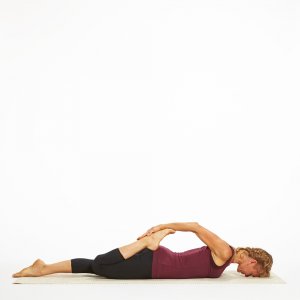
How to stretch: Begin lying on your stomach with your legs extended behind you.
Rest your forehead on the back of your hands.
Bend your left knee so that it’s parallel to your left hip, and flex your left foot.
Your left shin should be aligned to your right leg.
Press your left knee into the floor to bring your left inner thigh as close to the mat as possible.
Hold for 60-120 seconds before repeating on the opposite side.
Hero Pose
How to stretch: Begin kneeling with both knees on the floor.
Then put a block or foam roller between your feet, just below your tailbone.
Flex your knees to lower yourself down on the block or roller.
Maintaining your knees together and the tops of your feet pressed into the floor.
Sit tall with your shoulders directly above your hips.
Supported Side-Plank Reach
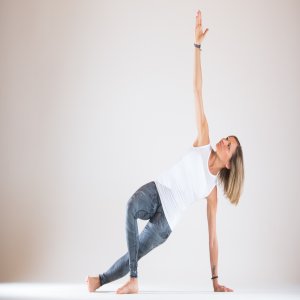
How to stretch: Begin kneeling with both knees on the floor, then extend your right leg out to the side.
Simultaneously place your left palm on the floor, directly below your left shoulder, and reach your right arm over your
right ear.
Your body should form a direct line from your right ankle to your right hand.
Press the outer edge of your right foot into the floor and rotate your shoulders so they are side by side to the wall in
front of you.
Pause for one to two minutes, then repeat the motion on the opposite side.
Seated butterfly stretch
How to stretch: Sit on the ground or on an exercise mat.
Place the soles of your feet together in front of you.
Let your knees flex out on either side.
Maintain your back straight and your abs engaged.
Relax your knees and allow them to down towards the ground.
Hold this butterfly pose for 10 – 30 seconds.
To feel a deeper stretch, lean forward while maintaining your back straight.
Knee to chest stretch
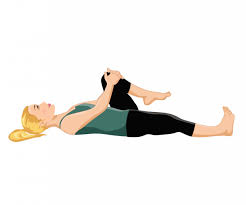
How to stretch: Lie down in a supine position with your legs extended on the ground.
Gently bend your left knee toward your chest.
Maintaining your back flat, pull the left knee as close to your chest as is possible without discomfort.
Stretch your right leg out as far as possible and squeeze the glute.
Holding time is 10-15 seconds.
Return to the beginning position and repeat with your opposite leg.
Pigeon Pose
How to stretch: Begin in a plank position.
Lift your right foot off the ground and slide it forward so your knee is on the ground next to your right hand and your foot
is near your left hand.
Exactly where your knee and toes drop will depend on your flexibility.
Slide your left leg back as far as you can while maintaining your hips square.
Lower yourself to the ground and onto your elbows, bringing your torso down as far as possible.
Hold the stretch without letting your chest drop.
When you feel like you have gotten a good stretch, switch sides.
Standing Stance Pelvic Tilt
How to stretch: Stand up tall with good posture, chest pointed up and both shoulders back.
Push the pelvis back and under.
Hold this standing pose for 10 – 20 seconds.
Release.
Cobra Stretch

How to stretch: Lie down in a prone position.
Press through your hands to extend the back.
Engage your glutes to stabilize the pelvis.
When you feel stretched in front of your thigh, pause there 10-15 seconds and release.
Perform this cobra stretch 3-4 times.
Wall psoas Stretch
How to stretch: Take Lunge position in front of the wall.
Rest right foot on the wall.
Drive your knee closer to the wall.
Rotate the hips backwards again.
To lower the intensity of this stretch, drive your knee forward.
Hold this psoas stretch 15-20 seconds and do it 3-4 times.
Sumo Squat Stretch
How to stretch: Stand tall with your feet wider apart.
Laterally rotate your feet. Your knees and toes are pointing out.
Maintain your back straight and chest facing up.
Squat downward while maintaining your thighs facing out.
Pause that squatting position for 10-15 seconds and perform it 2-3 times.
What are the Safety and Precautions you should take during iliopsoas stretch?
There is a guideline you have to follow during psoas stretch:
- You have to hold the iliopsoas stretch for a certain amount of time, like 20-30 seconds. That’s why they are typically suggested for after workouts, once the muscle group is comfortable. Since the iliopsoas muscle is connected with the
- hips and trunk, it is critical to do stretches with precise form.
- Go slow when going into a stretch, and never ever go to the point of discomfort.
- To obtain the most out of your stretching routine, experts suggested performing flexibility exercises for all of the major muscle and tendon groups minimum two to three times a week.
- Don’t stretch the muscle where you have prior injuries, such as a sprain, bursitis, fracture etc.
- Don’t bounce during the stretch, it can cause injuries to your muscle.
- Never skip stretching, it can cause a reduction in your range of muscle. you can increase it by doing the daily stretch.
FAQs
How do you stretch the iliopsoas muscle?
Kneel on the floor with your calves flat and your hands on your hips. Bring the afflicted leg forward and place the affected foot flat on the floor. Lean forward gently, hold the stretch for two seconds, and then move your weight back.
What are the symptoms of tight iliopsoas?
Symptoms of tight iliopsoas are
Hip and thigh pain and/or stiffness.
Pain that intensifies when doing anything that causes the hip to bend (for example, walking, climbing stairs, crouching, sitting)
You may hear or feel hip or groin clicking or cracking while executing these motions.
Tenderness in the groin and hip.
What causes iliopsoas tightness?
Excessive sitting can cause the psoas to become short and tight. Because of how the legs are positioned, it will shorten if a person sleeps on their side. It can also become tight if it is employed as the major spine stabilizing muscle.
What is the best exercise for iliopsoas tendonitis?
Stand straight with your feet hip-width apart for lunges (iliopsoas stretch). Step forward with your front foot and bend your back knee towards the floor. Maintain a straight back and both knees at 90 degrees.

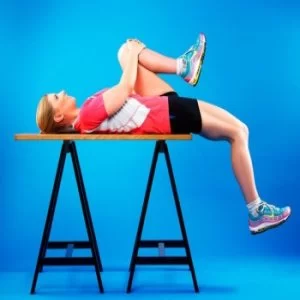
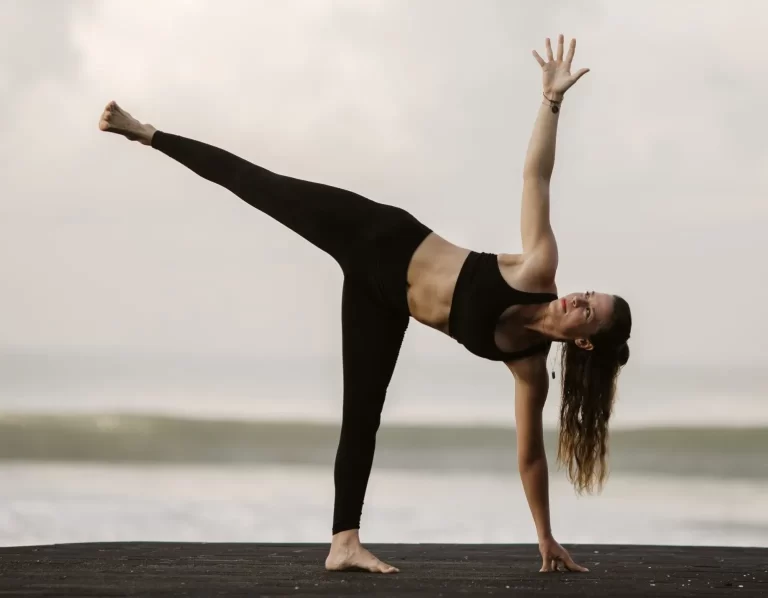


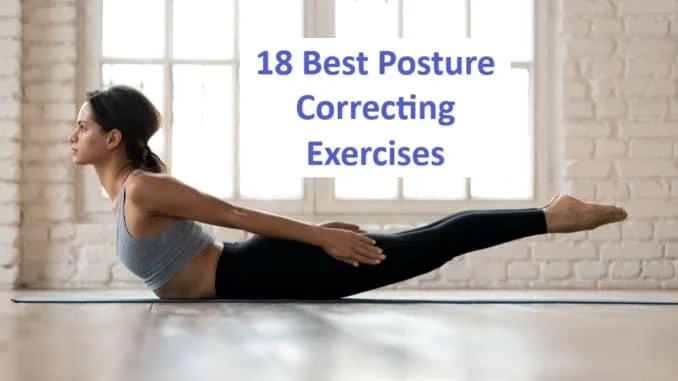
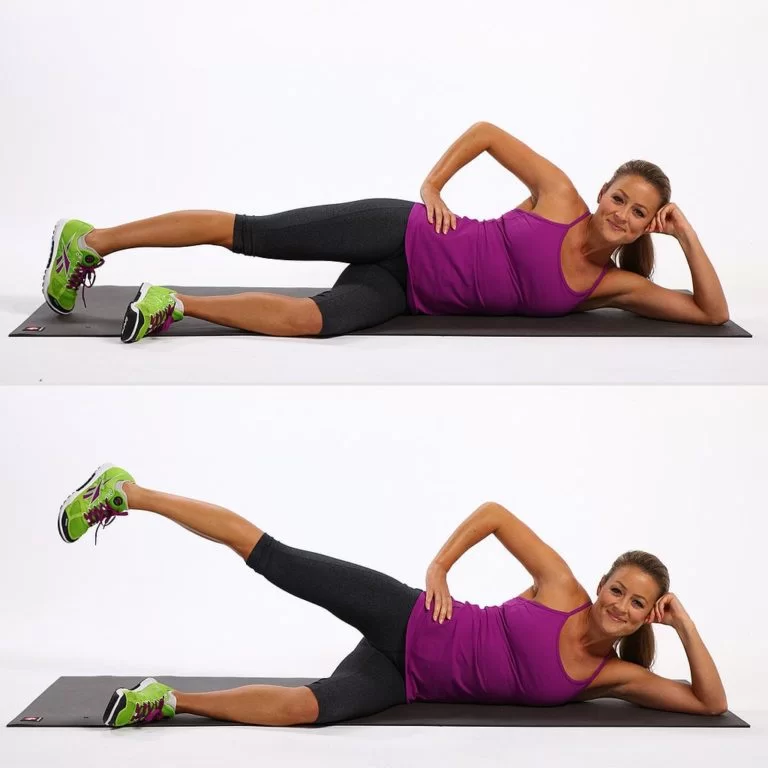

2 Comments